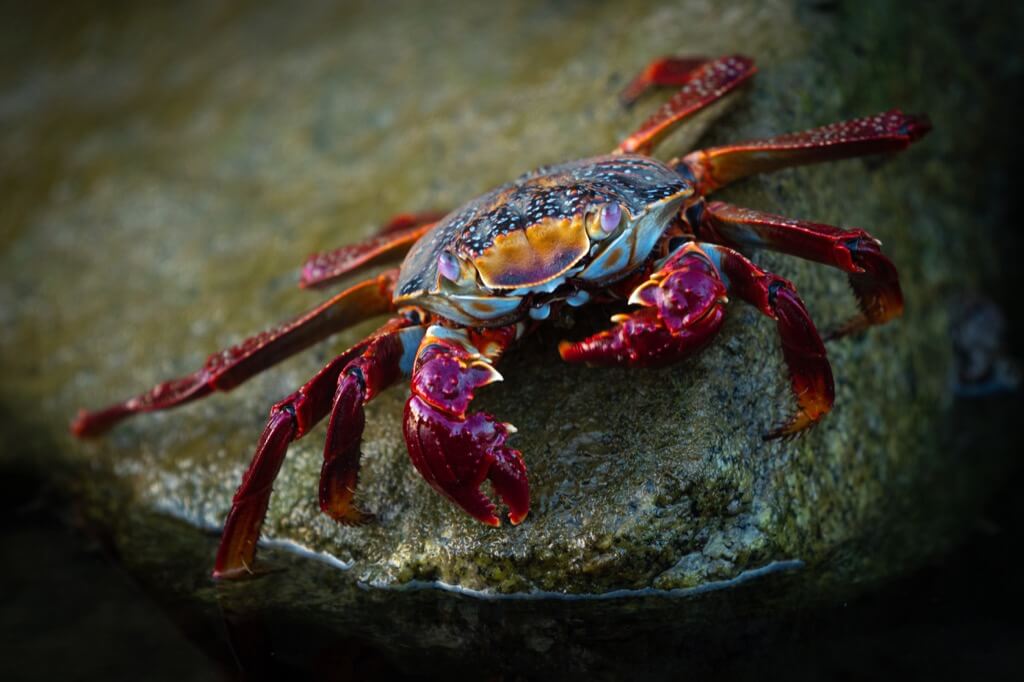When we think about the world of dating and courtship, our minds often conjure images of romantic dinners, flowers, chocolates, and perhaps a bit of champagne. However, beneath the surface of the ocean, in the mysterious world of shellfish, the dating scene is vastly different. There are no candlelit dinners or sweet serenades, no swanky nightclubs or charming pickup lines. Instead, these aquatic creatures engage in a remarkable array of mating behaviors that are as diverse as they are fascinating.
From lobsters and crabs to shrimp and mollusks, each species has evolved its unique strategies for reproduction. So, fasten your diving mask and prepare to dive deep into the extraordinary realm of shellfish courtship.
Mating begins with lobsters, where the females take on the role of determined sexual predators. This intriguing role reversal occurs because male lobsters are notorious for their stubbornness and penchant for combat rather than romance. With lobsters, dominance is key. It’s not uncommon to witness female lobsters patiently queuing up outside the lair of a dominant male, waiting for their chance to engage in the ultimate showdown.
When a female lobster is preparing for her molt, a critical phase in her life cycle, she embarks on a mission to find the cave of a dominant male. Here’s where it gets interesting: to lure the male into his den, she releases a pheromone at the entrance. This chemical signal essentially says, “Let’s put an end to this fighting and start making love.” It’s her only option to quell the male’s aggressive tendencies.
The female persistently wafts her alluring scent in front of the male’s face until he finally calms down. However, it’s not uncommon for him to engage in a battle with her due to his inherently competitive nature. Once he asserts his dominance, he storms out of his bachelor pad, ready to defend his territory against any rival lobsters.
Now that the battle has concluded, the female boldly enters his den and starts to scratch his head with her claws. As she begins to molt, essentially stripping down to her ‘underwear,’ the male takes on the role of a gentle lover. He carefully flips her over, and at this point, the male faces a crucial decision – to mate or to devour her. The choice depends on his mood and circumstances. With her protective shell shed, the female becomes entirely vulnerable.
If the male opts for mating, the female remains in his den for about a week until her new shell hardens. During this time, he offers her protection. It’s uncertain whether he ever calls her again, but one thing’s for sure – he won’t remain lonely for long. If he chooses to consume the female, the next female in line attempts to win him over with her pheromone-laden charm. After all, his stomach is now full, and perhaps his heart is open to a new mate.
Crabs
Let’s move on to crabs, where it’s the males who must impress the females. Their courtship rituals often resemble scenes from a fraternity party, complete with unique moves and displays of strength.
- To win over a female crab, the male occasionally rocks back and forth while standing on the tips of his walking legs. Picture it as a crab’s version of a toga party – though we can’t say for sure if they’ve adopted such attire just yet.
- Even after accepting the male’s invitation, the female can play hard to get. She may still act coy and elusive. However, before she molts, the male showcases his strength by carrying her around for a few days. This act of chivalry serves as a prelude to their mating encounter.
- After the display of strength and charm, the male and female crabs engage in a rather lengthy mating session that can last for a couple of hours. It’s a marathon of love, crab-style. Once they’ve completed their passionate rendezvous, the male often holds the female close until her new protective shell forms.
Shrimp
The mating game is characterized by its predictability and routine. Similar to crabs and lobsters, shrimp mate immediately after the female undergoes molting. What sets shrimp apart is their commitment to a schedule – they often engage in mating rituals three times a year, like clockwork. These scheduled rendezvous typically occur in the spring, summer, and winter, almost as if these tiny sea creatures have marked these seasons in their calendars.
Mussels, Clams, and Oysters
Now, we arrive with mussels, clams, and oysters, where the mating behaviors take an unexpected turn. In these species, the process of reproduction is far from what we might consider conventional.
- In adult males of these species, a rather peculiar behavior unfolds. They release their sperm into the water, creating a cloud of potential mates. It’s an unconventional approach to attract a female, and it’s certainly not a romantic dinner date.
- Females of these species play a different role. They house countless eggs within their gills. When the cloud of sperm is released into the water, the females collect as much as they can. This unconventional method of fertilization leads to a curious dance of sperm and eggs in the aquatic world.
- In this rather kinky process, nature takes a different path to ensure the survival of these species. It’s a stark contrast to the elaborate courtship rituals we’ve explored earlier, showcasing the astonishing diversity of reproductive strategies in the underwater world.
One thing becomes abundantly clear – the world beneath the waves is a realm of astonishing diversity and creativity when it comes to reproduction. From the fierce battles of lobsters to the courtship dances of crabs, the predictable rendezvous of shrimp, and the unconventional behaviors of mussels, clams, and oysters, these aquatic creatures have devised unique strategies to ensure their survival and the continuation of their species.
Hermaphrodites
Some shellfish species, such as certain types of clams, are hermaphrodites, meaning they possess both female and male reproductive systems within their intricate bodies. This biological feature allows them to take on multiple roles in the reproductive process.
- Male clams, for instance, produce sperm, tiny cells laden with the genetic information needed to create a new life. These sperm are released into the water, embarking on a journey that may eventually lead to fertilization.
- In contrast, female clams are equipped to produce eggs, the other crucial component of the reproductive equation. These eggs are retained internally within the female’s body, awaiting the moment of fertilization.
- As male clams release their sperm into the aquatic environment, these tiny cells are drawn into the female bivalve through her siphons, specialized tubes that play a vital role in respiration and filter-feeding. Within the female’s body, the intricate dance of fertilization unfolds, as the sperm meet the waiting eggs. This union marks the beginning of a new life in the underwater world.
The birth of clams, also known as soft-shell clams, is a process that holds its fascination. Clams are known to spawn by releasing either eggs or sperm through their excurrent, or outgoing, siphon. This is a significant event in the life of a clam, as it marks the moment when the next generation is set in motion.
When female clams begin to spawn, they are often carefully removed from their habitat and placed into a separate dish filled with seawater. This precaution ensures an accurate count of the eggs she produces, shedding light on the reproductive health of the clam population. From the release of eggs and sperm to the early stages of development, the life cycle of clams is a remarkable journey of survival and adaptation. It exemplifies the intricate balance of nature beneath the waves.
Oysters
Oysters, those delectable creatures enjoyed on seafood platters around the world, have a unique approach to reproduction. They are classified as broadcast spawners, a term that denotes their practice of releasing both eggs and sperm into the water column. This process, known as external fertilization, is a common strategy among many marine organisms.
In the wild, oysters engage in a grand spectacle of life as they release their eggs and sperm into the water. This act of broadcast spawning allows the genetic material of oysters to disperse widely in the aquatic environment. As these tiny reproductive cells mingle in the water, fertilization occurs. It’s a fascinating example of nature’s ability to orchestrate the creation of life in the vast expanse of the ocean.
Pearls
While we’re on the subject of shellfish, let’s explore the intriguing world of pearls. Pearls, those lustrous and coveted gems, are created by certain shellfish, including marine oysters and freshwater mussels. But what prompts these creatures to produce these iridescent marvels?
Pearls are not merely objects of beauty; they are born as a natural defense mechanism. When an irritant, such as a parasite, enters the delicate shell of an oyster or mussel, the creature’s innate response is to protect itself. In response to the irritant, the shellfish secretes layers of aragonite and conchiolin, materials that also make up their protective shells. These layers gradually accumulate, forming the pearl over time. It’s a testament to the incredible adaptability of these shellfish and their ability to transform adversity into something of extraordinary value and allure.
Gender Distinction in Shellfish
In our exploration of shellfish reproduction, it’s important to note that many species exhibit distinct male and female genders, a characteristic that sets them apart from hermaphrodites. Take, for example, fingernail clams, which are considerably smaller than their mussel counterparts. Fingernail clams, like mussels, generally have clear gender distinctions. They possess separate male and female individuals, each with their specific roles in the reproductive process. Sexual reproduction is the norm among these bivalves, a process that contributes to the diversity and abundance of shellfish populations.
The next time you enjoy a delectable seafood meal, take a moment to reflect on the fascinating tales of romance and survival that play out beneath the surface of the ocean. It’s a world where love and life take on forms as varied and enchanting as the creatures themselves.




